At Evans Graphics we pride ourselves on being industry experts for both screen and digital printing.
With this in mind, we make a point of keeping up to date with new trends and technological advancements across the wider print sector.
Recently we learned of a printing process taking the fashion world by storm: Direct to Film, or DTF, Printing.
TheMagicTouch, a leading supplier of image transfer papers, heat presses, and other printing collateral, has been making waves with their new DTF transfer and toner-based processes.
Their usage of DTF Printing allows them to personalise and decorate footwear, creating full colour images to almost any part of the shoe with minimal risk of damage.
How Does Direct to Film Printing Work?
Direct to Film Printing is similar in nature to both Screen and Direct to Garment Printing.
First the image is printed onto PET (polyethene terephthalate) film transfer paper using a special water-based textile ink.
After the textile ink has dried a hot-melt adhesive powder is applied to the back of the image. The application of the powdered glue to the image means that no pre-treatments are necessary.
Once the powder is coating the back of the transfer, the image can then be heat cured using an automatic roll fed unit, heat press, or a traditional dryer. As soon as the transfer is dry it can be duly applied to the final product.
DTF Printing is compatible with many different types of garments and textiles so can be used with a variety of materials including leather, pique blends, canvas, denim, and performance fabrics.
What Are the Benefits of Direct to Film Printing?
There are a multitude of benefits to using Direct to Film Printing for textiles, the most notable being the sheer durability of the output.
Unlike traditional methods such as Screen Printing or Direct to Garment Printing, Direct to Film Printing produces far more durable prints.
The specialist ink and adhesive that’s applied during the printing process stops the print from cracking or peeling when washed or during everyday use. This makes DTF the perfect process to use on garments that see a lot of usage. Think gym and exercise clothing, along with workwear.
As previously mentioned, DTF Printing is extremely versatile in how it can be deployed.
The process can be used in conjunction with a multitude of materials and surfaces which even include wood, metal, and glass! Indeed, DTF Printing makes it easy to transfer your designs to a whole spectrum of garments and merchandise.
Although the UK printing industry has seen some growth in 2022, both Covid and worldwide cost inflation have had a significant impact on printing companies.
Against this background, the fact DTF printing is considered cost-effective will not go unnoticed.
DTF requires less white ink than other methods, saving you a considerable amount of money on ink expenditure. The elimination of pre-treatment also cuts down on production time which means one-off or small-volume orders are made more profitable.
Don’t expect Evans Graphics to adopt the technique anytime soon but DTF is here to stay and you’re likely to hear a lot more about it.
For further insight into current industry practices, view our other printing processes blogs on our website.


